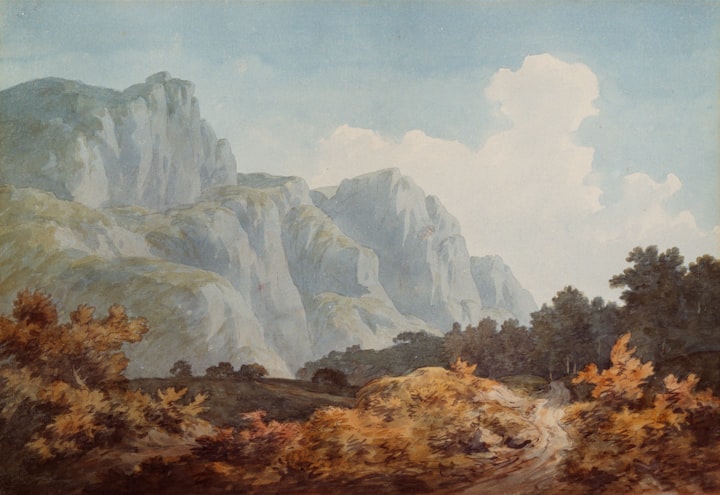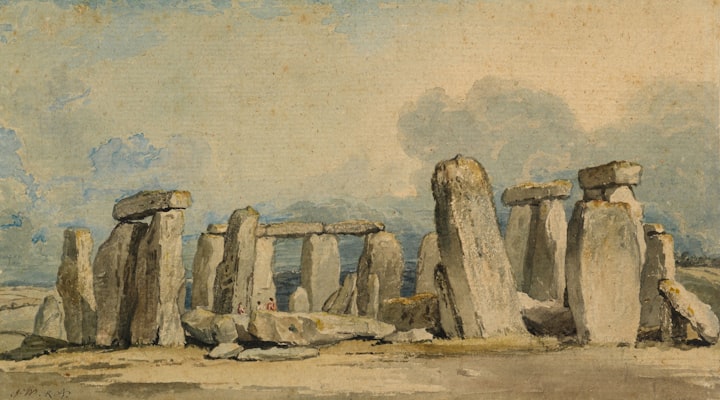Revolutionizing art: The impact of technology on the creative process
Technology

Revolutionizing art: The impact of technology on the creative process
Art has always been an integral part of human civilization, and it has evolved significantly over the centuries. From the earliest cave drawings to the masterpieces of the Renaissance, art has been shaped by the tools and techniques available to artists at the time. With the advent of technology, the way we create, consume, and appreciate art has undergone a massive shift. From digital painting and virtual reality installations to 3D printing and machine learning, technology has revolutionized the creative process. In this post, we will explore the impact of technology on the world of art and how artists are using it to push the boundaries of what is possible. We'll also discuss the challenges and controversies that arise when art meets technology, and what this means for the future of the art world.
1. Introduction to the impact of technology on art
Technology has greatly impacted the world of art in recent years. From digital painting to 3D printing, the creative process has been revolutionized by technology. The use of digital tools has allowed artists to experiment with new mediums and techniques, giving them more freedom and flexibility in their work. This has resulted in a shift in the way art is created and consumed, with traditional methods being replaced by more modern and innovative approaches. The integration of technology in art has also made it more accessible to a wider audience, democratizing the industry and allowing artists to reach larger audiences through social media and online platforms. As technology continues to evolve, we can expect to see even more advancements in the world of art, making it an exciting time for both artists and art enthusiasts alike.
2. How technology is changing the way artists create
Technology has been a game-changer for the art world, revolutionizing the way artists create. In the past, artists were limited to traditional mediums like canvas, paper, and clay. However, with the advent of technology, artists now have access to an array of digital tools and software that have completely transformed their creative process.
One such tool is the digital tablet, which allows artists to draw directly on the screen, much like they would on paper. This not only makes the process more efficient and faster but also offers a higher level of accuracy and precision.
In addition, technology has also opened up new avenues for artists to collaborate and share their work with others. With the rise of social media platforms, artists can now connect with other artists, share their work with a larger audience, and even sell their art online.
Moreover, technology has also made it easier for artists to experiment with different styles and mediums without the fear of ruining their work. With digital software, artists can easily undo mistakes, adjust colors, and experiment with different textures and styles.
Overall, technology has had a profound impact on the art world, and the possibilities for what artists can create are now endless.
3. Advancements in digital art: From tools to platforms
We've come a long way from the early days of pixelated graphics and limited color palettes. With advancements in technology, digital art has become an increasingly popular medium for artists to create and share their work with a global audience. The tools available to digital artists have evolved significantly, making it possible to create intricate and complex designs with ease. From digital tablets to specialized software programs, artists have the ability to create stunning pieces that rival traditional artwork in terms of complexity and beauty.
One of the most significant advancements in digital art is the emergence of platforms that allow artists to share their work with a global audience. Social media platforms like Instagram and Pinterest have enabled artists to build a following and share their work with millions of people around the world. This has opened up new opportunities for artists to showcase their work and connect with potential buyers.
In addition to social media platforms, there are also specialized online marketplaces that cater specifically to digital artists. These platforms provide a space for artists to sell their work to a global audience, without the need for a physical gallery space. This has democratized the art world, making it possible for artists of all backgrounds and skill levels to share their work and earn a living from their passion.
Overall, the advancements in digital art tools and platforms have revolutionized the creative process for artists around the world. With endless possibilities at their fingertips, artists have the ability to create stunning works of art that can be shared with a global audience with just a few clicks.
4. The democratization of art through technology
One of the most significant impacts of technology on the creative process is the democratization of art. In the past, producing and promoting art was largely controlled by gatekeepers such as galleries, museums, and publishers. These gatekeepers had significant power over which artists were able to gain recognition and success, as they controlled access to audiences and resources. This often meant that talented artists who didn't fit the traditional mold or who lacked connections struggled to gain exposure.
However, with the rise of technology, the barriers to entry in the art world have been significantly lowered. Artists are now able to create and distribute their work without the need for traditional gatekeepers. The internet and social media have provided a platform for artists to connect directly with potential audiences, allowing them to build their own followings and promote their work on their own terms.
Additionally, technology has also made it easier and more affordable for artists to create their work. Digital tools have allowed artists to experiment with new mediums and techniques, often at a lower cost than traditional methods. Furthermore, advancements in printing technology have made it possible for artists to reproduce their work more easily and at a lower cost, making it more accessible to a wider range of people.
Overall, technology has had a profound effect on the art world, democratizing the process and enabling more artists to create and share their work with the world.
5. The impact of social media on art and the art industry
Social media has had a significant impact on the art world and the art industry. It has revolutionized the way that artists can promote their work, connect with their audience, and reach new fans. Platforms like Instagram, Facebook, Twitter, and TikTok have become essential tools for artists to showcase their work and build their brand.
One of the most significant changes that social media has brought to the art industry is the democratization of the art world. In the past, the art world was often exclusive and inaccessible to many people. However, now, anyone with an internet connection can access and appreciate artwork from anywhere in the world.
Social media has also opened up new opportunities for artists to sell their work directly to buyers. Artists can now use social media platforms to promote their work, reach new audiences, and sell their art online. This has removed some of the traditional barriers between artists and buyers and has made the art market more accessible and transparent.
Another significant impact of social media on the art industry is the way that it has changed art criticism and art journalism. Social media has given a voice to a wider range of critics and journalists who can now share their opinions and perspectives on art with a global audience. This has led to a more diverse and inclusive art world, with a greater range of voices and viewpoints represented.
Overall, the impact of social media on the art world has been transformative. It has opened up new opportunities for artists, buyers, and fans, and has made the art world more accessible, inclusive, and democratic.
6. New forms of art enabled by technology
Technology has enabled artists to explore new forms of art that would have been impossible without it. One of the most notable forms is digital art, which has become increasingly popular in recent years. Digital art refers to any art that is created using digital technology, such as software or digital tools. It can take many forms, including digital paintings, digital sculptures, or even virtual reality installations.
Another form of art enabled by technology is interactive art. Interactive art is a form of art that encourages the audience to participate in the creative process. It can take many forms, including installations, performances, or even video games. Interactive art has become increasingly popular in recent years, as technology has made it easier to create immersive and interactive experiences for audiences.
Technology has also enabled artists to create art using new materials and techniques. For example, 3D printing has opened up a whole new world of possibilities for artists, allowing them to create intricate and complex sculptures that would have been impossible to create by hand. Augmented reality and virtual reality technologies have also enabled artists to create immersive experiences that transport audiences to new worlds and dimensions.
Overall, technology has revolutionized the art world, enabling artists to explore new forms of art and push the boundaries of what is possible. As technology continues to evolve, we can only imagine what new forms of art will emerge in the future.
7. The role of AI in art
Artificial Intelligence (AI) has been making its way into the art world and is now starting to play a significant role in the creative process. AI algorithms can analyze large amounts of data and identify patterns that humans may not be able to detect. This technology has allowed artists to experiment with new techniques and create unique works of art.
One way AI is being used is through generative art. This involves using algorithms to generate art that has never been seen before. The AI is programmed to create certain patterns or shapes, and the artist can then manipulate these patterns to create a final piece. This has led to the creation of some truly unique and original works of art.
Another way AI is being used is through the creation of art that responds to its environment or to the viewer. For example, an AI-powered installation may use sensors to detect the movements of people in a room and then change its color or shape in response. This creates an interactive experience for the viewer and allows for a deeper engagement with the artwork.
Finally, AI is also being used to analyze and interpret art. Algorithms can be trained to recognize certain patterns or styles, and then use this information to categorize and organize art. This has led to the creation of new tools for art historians and curators, allowing them to better understand and appreciate the art they are studying.
While there is some concern that AI may eventually replace human creativity, most experts agree that AI will only enhance the creative process. By providing new tools and techniques, AI is revolutionizing the art world and allowing artists to push the boundaries of what is possible.
8. How technology is changing the way we experience art
Technology has begun to revolutionize the way we experience art. With the advancements in virtual and augmented reality, we can now immerse ourselves into a piece of art like never before. Virtual and augmented reality technology allows us to explore a three-dimensional world of art, where we can walk around sculptures, view paintings from different angles, and even step inside a virtual museum.
Moreover, technology has opened up new ways for artists to create and showcase their work. Digital painting software and drawing tablets have made it possible for artists to create masterpieces without ever needing to touch a physical canvas or paintbrush. This allows artists to experiment with new techniques and mediums that they would have never been able to explore before.
Additionally, technology has made it possible for art to reach a wider audience. Online galleries, virtual exhibitions, and social media platforms allow artists to showcase their work to millions of people around the world. This creates opportunities for artists to gain recognition and for the public to discover new art forms and artists.
In conclusion, technology has brought about a new era in the art world, transforming the way we experience, create, and share art. It has opened up new opportunities for artists, and has made art more accessible to people all around the globe. The possibilities are endless, and we are only just beginning to scratch the surface of what technology can do for the creative process.
9. The benefits and challenges of integrating technology in art
Integrating technology in art can bring a wide range of benefits and challenges that artists need to consider. One of the most significant benefits of using technology in art is the ability to create and experiment with new forms of art that were not possible before. Artists can now use digital tools to manipulate images, create 3D models, and even use virtual reality to immerse their audience in their artwork. These new possibilities have opened up a world of creative opportunities for artists to explore.
Another benefit of integrating technology in art is the ability to reach a wider audience. Technology has made it easier for artists to share their work with people from all over the world. Social media platforms like Instagram and Facebook have become powerful tools for artists to showcase their work and connect with their audience.
However, there are also some challenges that come with integrating technology in art. One of the main challenges is the risk of losing the personal touch that is often associated with traditional art. With technology, it can be easy to get lost in the technicalities of creating art and forget about the emotions and feelings that make art so powerful.
Another challenge is the cost of technology. High-end software and equipment can be expensive, making it challenging for some artists to access these tools. Additionally, technology is constantly evolving, meaning that artists have to keep up with the latest trends and updates to stay relevant.
Overall, integrating technology in art can bring many benefits and challenges. It is up to the artist to determine how they want to use technology in their creative process and find the right balance between tradition and innovation.
10. Conclusion: The future of art in the age of technology
In conclusion, the impact of technology on the creative process has been nothing short of revolutionary. With the advent of digital tools and software, artists can now create and manipulate images in ways that were previously impossible. This has not only changed the way art is created but also how it is consumed and experienced by audiences.
The future of art in the age of technology is both exciting and unpredictable. As technology continues to evolve, so will the ways in which artists create and share their work. We can expect to see more immersive and interactive experiences for audiences, as well as new forms of art that we haven't even imagined yet.
However, it's important to remember that technology is just a tool. It's up to the artists to use it in a way that enhances their creativity and vision, rather than relying on it as a crutch. At the end of the day, it's the artist's unique perspective and individual voice that makes their art truly compelling and meaningful.
As we move into the future, we can look forward to a world where art is more accessible, more diverse, and more innovative than ever before. And with technology as a driving force, the possibilities are endless.
------------------------------





Comments
There are no comments for this story
Be the first to respond and start the conversation.